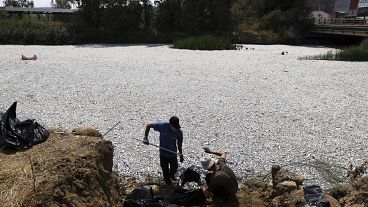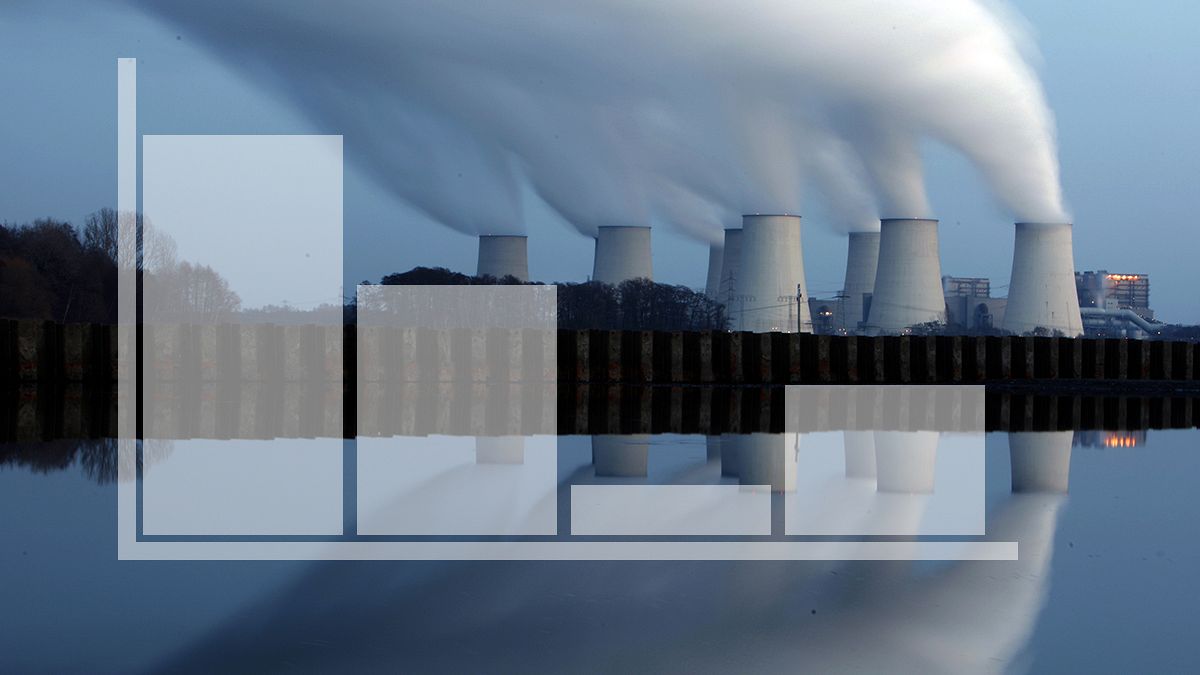Poland, Germany and Romania are the EU’s worst when it comes to ‘exporting’ deadly fumes from their coal-fired power plants, a groundbreaking new report has…
Poland, Germany and Romania are the EU’s worst when it comes to ‘exporting’ deadly fumes from their coal-fired power plants, a groundbreaking new report has claimed.
The trio’s coal pollution caused an estimated 8,840 premature deaths beyond their own borders, according to the analysis, produced by an alliance of environmental groups.
The report, Europe’s Dark Cloud, is the first of to look at the cross-border harm of coal-fired power plants.
It looked at 257 coal plants across the EU, claiming they caused an estimated 22,900 premature deaths in 2013, on top of their environmental harm.
The EU states worst-hit by coal pollution from other countries were Germany, Italy and France.
Who is the worst for exporting deadly coal pollution?
Poland is by far and away the EU’s worst offender. The report claims its coal-fired power plants are responsible for an estimated 4,690 premature deaths outside its borders and 1,140 within them.
The country produces around 85 percent of its electricity from coal and coal miners have a powerful presence in domestic politics.
Poland president Andrzej Duda has rejected the idea of the country – worried about being too reliant on Russia for its energy – weaning itself off fossil fuels, despite a target for it to produce 15 percent of its energy consumption from renewable sources.
In 2014 Poland’s renewables produced 11.4 percent of the energy consumed in the country.
Germany, which has six of the most polluting coal-powered plants in the EU, is second to Poland and is responsible for an estimated 2,490 early deaths beyond its own borders, says the report.
It has made strides with renewable energy, which now make up more than a third of the energy the country produces.
But it comes as leaked documents show Germany has seemingly abandoned plans to set out a timetable for phasing out coal-fired power production.
Romania, which caused 1,660 early deaths beyond its borders, is, like its neighbour Bulgaria, temporarily exempt from EU emission limits for industrial pollutants, meaning many of its plants do not have basic filters for sulphur dioxide, says the report.
It claims Romanian and Bulgarian coal-fired power facilities are responsible for 17 percent of all early deaths caused by coal pollution in Europe, despite accounting for only six percent of the total amount of coal burnt in power plants.
How does coal pollution cause so many early deaths?
Europe’s Dark Cloud says the 257 coal plants studied were associated with 22,900 early deaths – defined as cases where the person would have survived longer if air quality was better – in 2013. How did they come to that conclusion? Well, they combined the 2013 pollution figures with weather data from the same year.
The report claims 83 percent of the 22,900 fatalities were caused by fine particulate matter, known as PM2.5, which are formed in the atmosphere from the coal plants’ sulphur dioxide and nitrogen dioxide emissions.
A third of all CO2 emissions – which were revealed to have increased in the EU, just months after the Paris climate conference – are caused by burning coal.
Who has already phased out coal-fired power plants?
Belgium this year became the latest EU country to go coal-free, joining Cyprus, Estonia, Latvia, Lithuania, Luxembourg and Malta.
Portugal aims to follow suit by 2020, the UK and Austria in time for 2025 and Finland sometime in the 2020s.
“The report proves that a full coal phase-out is a true Europe-wide cause that unites us all and as such should be one of the EU’s stated goals,” said Imke Lubbeke, head of climate and energy at WWF’s European office. “The devastation coal wreaks on the climate and health of all Europeans means that all EU countries have a shared interest in working together to phase it out as soon as possible.”
How is the EU doing at moving to renewable energy?
Wendel Trio, director of Climate Action Network Europe, used the report to call for EU countries to ramp up efforts to move to 100 percent renewable energy.
We are still a long way from achieving this.
Latest figures, from 2014, show the EU produced 16 percent of its energy consumption from renewables; its target is to reach 20 percent by 2020.
Portugal, however, delighted environmentalists earlier this year when it became the first EU country to power its electricity needs for several days using 100 percent renewables.
Sweden produced more than half of its total energy consumption from renewables in 2014, while Latvia, Austria and Finland made more than a third of theirs in this way.












